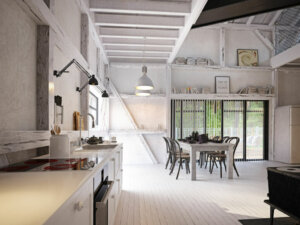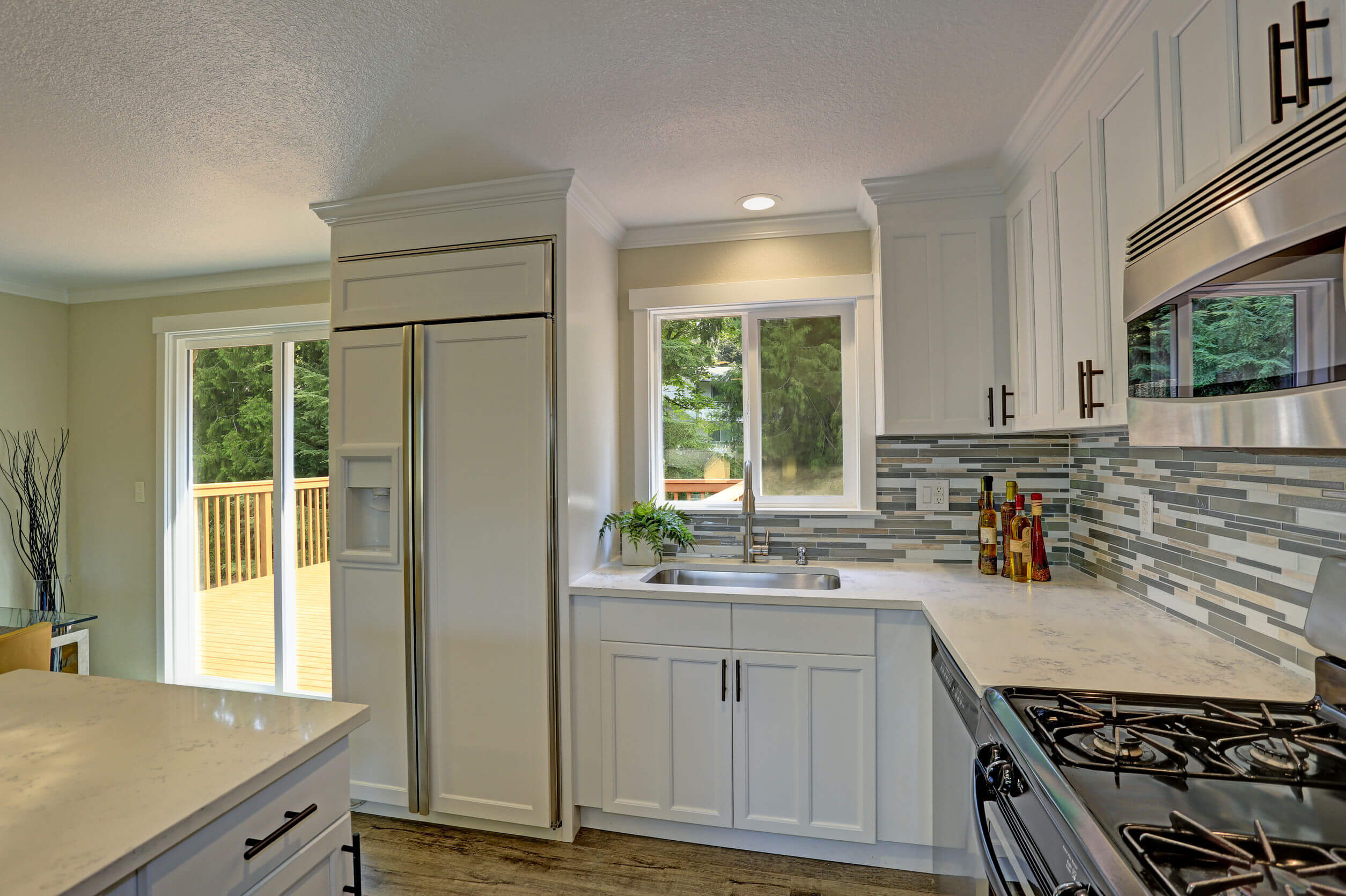Can Tradition Combine With Innovation?

On occasion, we’ve all wondered what to do with certain ancient or inherited resources. Do they have any place in current styles or do they complement our interiors? Therefore, it’s time to find out if you can combine tradition with innovation.
Surely, we’ve all wondered if our decoration is old-fashioned or if it’s outdated. Perhaps it’s time for a modern and more original touch that’s in the style of new trends to reflect contemporaneity.
For this reason, we’re going to consider how to intervene and find balance; that is, to place ourselves in an intermediate space between what’s been useful in the past with new, current ideas.
The link between tradition and innovation

We all like styles that are reminiscent of the rural world where noble materials such as wood or the use of stone as fundamental items are used. It’s from here that we proceed to create certain relationships that favor interior aesthetics.
However, is it possible to introduce other, more modern products? Will this complement our space or hinder it? Everything is a matter of correctly defining the internal design, choosing the right ornaments, and trying to create a look that’s both pleasing and functional.
More and more interior designers are inspired by older houses and enjoy giving them a renewable touch. The goal is to reflect and reuse ideas from the past to give them a new life; in short, to reuse what was already worked on.
Four techniques to combine tradition with innovation
If we want to establish a union of both concepts in the interiors of our homes, we must bear in mind that harmony must be the base on which all decor is sustained. The way to achieve this precept is through a correct adaptation of the chosen elements. Let’s see some examples:
- Wooden furniture is a great bet. The idea is that this material remains visible and with a certain worn appearance. It’s a way of transmitting the sensation of the passage of time and offering an image of the past but introduced in a current space.
- The exposed beams attract our eyes and generate a certain self-absorption by being located on the ceiling. This approach was typical of old houses, in such a way that, today, beams also have a place and complement other components.
- Another possibility is furniture with curved profiles. They’re linked to a Baroque style but, nowadays, they take on another meaning: they move away from a vintage style. This aspect is very interesting for those who prefer conservative designs.
- Farm implements have a second utility. Instead of leaving them unused or getting rid of them, why not reuse them in another format? We can make a table with them or simply arrange them as decorations on the wall.
Kitchens with technological appliances

Can traditional content be applied together with state-of-the-art technological elements? Of course. This idea is very interesting. Instead of being stuck in the past, we have the opportunity to change and look for a viable alternative.
Although we use wooden furniture with designs that remind us of our grandmothers’ house, this idea becomes a particular principle to work on internal aesthetics from a more technical point of view.
On the other hand, it’s important to note that, after all, we’ll have a traditional decoration that can show an attractive and vintage style. Hence we can complement all this with appliances that open the way to innovation and the future.
Tradition with innovation: our link with today’s world
We must take into account the difficulty of detaching ourselves from the modernity of the styles that currently predominate in homes. They have a series of aesthetic elements that, deep down, show a taste for new ideas, as is the case with minimalism.
The present world is modern; however, we can combine these approaches with other appealing resources that remind us of the past. That’s the main purpose that we must contemplate if we want to unite tradition with innovation.
On occasion, we’ve all wondered what to do with certain ancient or inherited resources. Do they have any place in current styles or do they complement our interiors? Therefore, it’s time to find out if you can combine tradition with innovation.
Surely, we’ve all wondered if our decoration is old-fashioned or if it’s outdated. Perhaps it’s time for a modern and more original touch that’s in the style of new trends to reflect contemporaneity.
For this reason, we’re going to consider how to intervene and find balance; that is, to place ourselves in an intermediate space between what’s been useful in the past with new, current ideas.
The link between tradition and innovation

We all like styles that are reminiscent of the rural world where noble materials such as wood or the use of stone as fundamental items are used. It’s from here that we proceed to create certain relationships that favor interior aesthetics.
However, is it possible to introduce other, more modern products? Will this complement our space or hinder it? Everything is a matter of correctly defining the internal design, choosing the right ornaments, and trying to create a look that’s both pleasing and functional.
More and more interior designers are inspired by older houses and enjoy giving them a renewable touch. The goal is to reflect and reuse ideas from the past to give them a new life; in short, to reuse what was already worked on.
Four techniques to combine tradition with innovation
If we want to establish a union of both concepts in the interiors of our homes, we must bear in mind that harmony must be the base on which all decor is sustained. The way to achieve this precept is through a correct adaptation of the chosen elements. Let’s see some examples:
- Wooden furniture is a great bet. The idea is that this material remains visible and with a certain worn appearance. It’s a way of transmitting the sensation of the passage of time and offering an image of the past but introduced in a current space.
- The exposed beams attract our eyes and generate a certain self-absorption by being located on the ceiling. This approach was typical of old houses, in such a way that, today, beams also have a place and complement other components.
- Another possibility is furniture with curved profiles. They’re linked to a Baroque style but, nowadays, they take on another meaning: they move away from a vintage style. This aspect is very interesting for those who prefer conservative designs.
- Farm implements have a second utility. Instead of leaving them unused or getting rid of them, why not reuse them in another format? We can make a table with them or simply arrange them as decorations on the wall.
Kitchens with technological appliances

Can traditional content be applied together with state-of-the-art technological elements? Of course. This idea is very interesting. Instead of being stuck in the past, we have the opportunity to change and look for a viable alternative.
Although we use wooden furniture with designs that remind us of our grandmothers’ house, this idea becomes a particular principle to work on internal aesthetics from a more technical point of view.
On the other hand, it’s important to note that, after all, we’ll have a traditional decoration that can show an attractive and vintage style. Hence we can complement all this with appliances that open the way to innovation and the future.
Tradition with innovation: our link with today’s world
We must take into account the difficulty of detaching ourselves from the modernity of the styles that currently predominate in homes. They have a series of aesthetic elements that, deep down, show a taste for new ideas, as is the case with minimalism.
The present world is modern; however, we can combine these approaches with other appealing resources that remind us of the past. That’s the main purpose that we must contemplate if we want to unite tradition with innovation.
All cited sources were thoroughly reviewed by our team to ensure their quality, reliability, currency, and validity. The bibliography of this article was considered reliable and of academic or scientific accuracy.
- Gilliatt, Mary: El libro de la decoración, Círculo de lectores, 1987.







